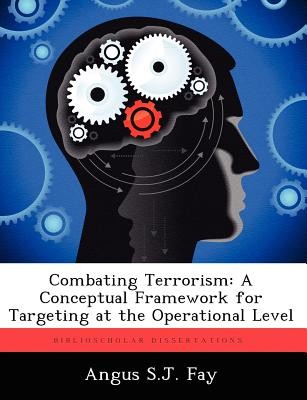
- We will send in 10–14 business days.
- Author: Angus S J Fay
- Publisher: BiblioScholar
- ISBN-10: 1249364167
- ISBN-13: 9781249364160
- Format: 18.9 x 24.6 x 0.4 cm, softcover
- Language: English
- SAVE -10% with code: EXTRA
Reviews
Description
This thesis examines the relevance of joint intelligence preparation of the battlespace (JIPB) process, as published in Joint Publication 2-01.3, Joint Tactics, Techniques, and Procedures for Joint Intelligence Preparation of the Battlespace, 24 May 2000, for its application to targeting terrorism at the operational level. The study begins with a review of the change in the operational environment and its impact on existing doctrine that was essentially developed for high-intensity war fighting on a symmetrical basis. This study explains the significance of the terrorist phenomenon at the operational level in the modern context and goes on to review three key conceptual models for orienting on terrorist groups. Further, it analyzes the relative merits of these models to the military planner within the context of campaign design. The results are applied to Step 3 of the JIPB Process--Evaluating the Enemy. The study concludes that the JIPB process is a relevant and effective methodology for orienting on the enemy, but that it falls short of providing military planners at the operational level with a specific template to apply when considering terrorism as a threat. It supports the inclusion of a specific adversary model in JP 2-01.3 to assist analysts, planners, and the joint force commander (JFC) in campaign design and decision making.
EXTRA 10 % discount with code: EXTRA
The promotion ends in 17d.03:23:31
The discount code is valid when purchasing from 10 €. Discounts do not stack.
- Author: Angus S J Fay
- Publisher: BiblioScholar
- ISBN-10: 1249364167
- ISBN-13: 9781249364160
- Format: 18.9 x 24.6 x 0.4 cm, softcover
- Language: English English
This thesis examines the relevance of joint intelligence preparation of the battlespace (JIPB) process, as published in Joint Publication 2-01.3, Joint Tactics, Techniques, and Procedures for Joint Intelligence Preparation of the Battlespace, 24 May 2000, for its application to targeting terrorism at the operational level. The study begins with a review of the change in the operational environment and its impact on existing doctrine that was essentially developed for high-intensity war fighting on a symmetrical basis. This study explains the significance of the terrorist phenomenon at the operational level in the modern context and goes on to review three key conceptual models for orienting on terrorist groups. Further, it analyzes the relative merits of these models to the military planner within the context of campaign design. The results are applied to Step 3 of the JIPB Process--Evaluating the Enemy. The study concludes that the JIPB process is a relevant and effective methodology for orienting on the enemy, but that it falls short of providing military planners at the operational level with a specific template to apply when considering terrorism as a threat. It supports the inclusion of a specific adversary model in JP 2-01.3 to assist analysts, planners, and the joint force commander (JFC) in campaign design and decision making.


Reviews